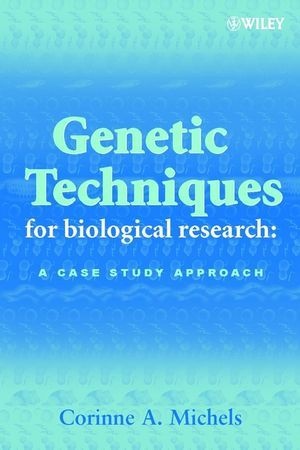Read more
Informationen zum Autor Corinne A. Michels is the author of Genetic Techniques for Biological Research: A Case Study Approach , published by Wiley. Klappentext "We must teach students the conceptual and technical approaches used to solve problems in biology. This book will do this superbly." - Professor Steve Oliver , School of Biological Sciences, University of Manchester, UK Molecular genetic analysis is the fusion of biochemical and genetic approaches to investigate the underlying mechanisms of cellular processes. These techniques have been developed over the past decades by researchers working with model organisms such as bacteriophage, E. coli, Saccharomyces, Drosophila, maize, and more recently, Arabidopsis and C. elegans. The details of cultivation and crossing of each organism differ, but the theory behind molecular genetic analysis is the same for all of these organisms. Genetic Techniques for Biological Research teaches the methods of molecular genetic analysis using a case study approach with the yeast Saccharomyces as the model genetic organism. The tools available for Saccharomyces are the most highly developed, and yet also most straightforward, of all of the eukaryotic research organisms. Furthermore, the theoretical basis of the methods of molecular genetic analysis learned using yeast are directly applicable to other organisms. The aim is that the reader will develop an appreciation for the molecular genetic method of analysis, and will be able to translate the critical thinking skills illustrated by the case studies to the reader's own research projects and scientific decision making. Features include: theoretical overviews of the methods and tools of molecular genetic analysis the application of these techniques to published research articles case studies with questions to enable students to develop critical thinking skills Genetic Techniques for Biological Research teaches the theory and practice of molecular genetic analysis to advanced undergraduates and graduates studying genetics, genomics, molecular biology and cell biology and is a valuable addition to the reference library of any research laboratory. Zusammenfassung This advanced textbook teaches the theory and practice of molecular genetic analysis to senior undergraduates and graduates studying genetics, molecular biology and cell biology. It uses a case study approach, with the yeast Saccharomyces as the model genetic organism, to explain the theory and practice of molecular genetic analysis. Inhaltsverzeichnis Introduction. SECTION I: SACCHAROMYCES CEREVISIAE AS A GENETIC RESEARCH ORGANISM 1. Saccharomyces cerevisiae As a Genetic Model Organism 2. Techniques in Cell and Molecular Biology 3. Saccharomyces Cell Structure SECTION II: TECHNIQUES OF GENETIC ANALYSIS 4. Mutant Hunts - To select or to screen (perhaps even by brute force) 5. Complementation analysis: How many genes are involved? 6. Epistasis analysis 7. Gene isolation and analysis of multiple mutant alleles 8. Suppression Analysis 9. Enhancement and synthetic phenotypes 10. Two-hybrid analysis 11. Advanced concepts in molecular genetic analysis 12. Genomic Analysis SECTION III: CASE STUDIES FROM THE SACCHAROMYCES GENETIC LITERATURE Case Study I: Glucose Sensing and Signaling mechanisms in Saccharomyces Case Study II: Secretion, Exocytosis and Vesicle Trafficking in Saccharomyces Case Study III: The Cell Division Cycle of Saccharomyces Case Study IV: Mating-type Pheromone Response Pathway of Saccharomyces Index. ...

